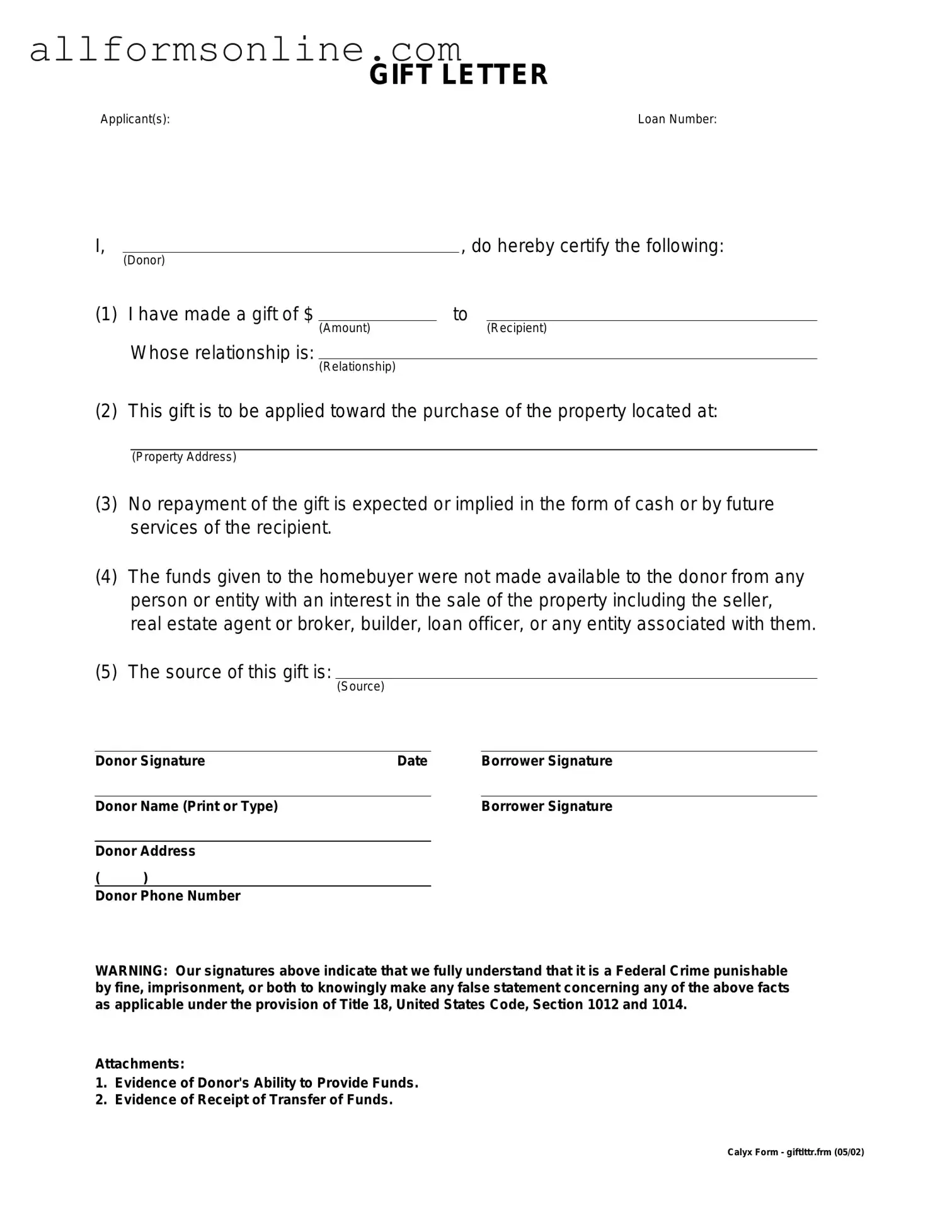What is a Gift Letter form?
A Gift Letter form is a document used to confirm that a monetary gift has been given to an individual, often for the purpose of assisting with a down payment on a home. This form helps clarify that the funds are a gift and not a loan, which is important for lenders assessing a borrower’s financial situation.
Who typically needs a Gift Letter form?
Individuals who receive financial gifts to help with purchasing a home usually need this form. Lenders often require it to ensure that the funds do not create additional debt obligations. This includes first-time homebuyers receiving assistance from family members or friends.
What information is included in a Gift Letter form?
A typical Gift Letter form includes the donor's name, address, and relationship to the recipient. It also specifies the amount of the gift and states that the funds are a gift with no expectation of repayment. Additionally, the donor may need to sign the letter to validate the information provided.
How does a Gift Letter affect the mortgage application process?
Providing a Gift Letter can positively impact the mortgage application process. It assures lenders that the borrower is not taking on additional debt, which can improve the chances of loan approval. It also provides transparency about the source of funds, which is crucial for compliance with lending regulations.
Is there a limit on the amount that can be gifted?
While there is no specific limit on the amount that can be gifted for a home purchase, the IRS does impose annual gift tax exclusions. As of 2023, an individual can gift up to $17,000 per recipient without incurring gift tax. However, amounts exceeding this may require the donor to file a gift tax return.
Can a Gift Letter be used for other purposes besides home purchases?
Yes, a Gift Letter can be utilized for various purposes beyond home purchases. It can also be used for funding education, covering medical expenses, or any other financial support where clarity about the nature of the funds is necessary. However, its primary use remains in real estate transactions.
